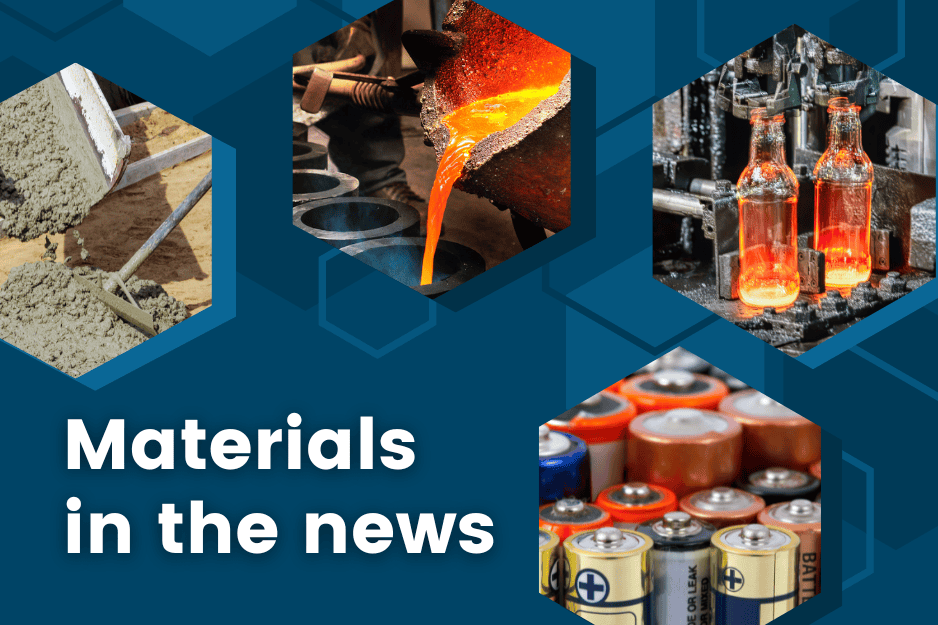
[Image above] Credit: ACerS
ENERGY
Fusion with a twist: Improving stellarators
Researchers led by Princeton Plasma Physics Laboratory used an easy-to-compute proxy function that predicts how fast particles move away from magnetic fields. Using this proxy function, they developed several possible plasma configurations that would lose fewer energetic particles in fusion devices called stellarators.
All-inorganic perovskite solar cells stabilized with ligand
Researchers introduced the ligand para-toluenesulfonyl hydrazide into all-inorganic perovskite solar cells and found it helped facilitate the formation of films, regulated crystallization processes, and created an electron-rich protective environment that suppresses degradation reactions.
Novel green solvent could help scale up fabrication of perovskite-based tandem solar cells
Nanjing University researchers created a new green solvent that can effectively dissolve cesium and bromide salts in perovskites and could thus be well-suited for the fabrication of both wide-gap and narrow-gap perovskite-based tandem solar cells. The solvent contains dimethyl sulfoxide, acetonitrile, and ethyl alcohol.
ENVIRONMENT
Novel sensor design to make hazardous gas monitoring cheaper
Skoltech researchers designed and tested an inexpensive and easy-to-manufacture semiconductor-based gas sensor. The sensor incorporates a piece of single-walled carbon nanotube fabric, which serves as the sensitive material, suspended in the air between two gold electrodes sputtered onto a polycrystalline aluminum oxide substrate.
AI helps researchers dig through old maps to find lost oil and gas wells
Researchers at Lawrence Berkeley National Laboratory found oil and gas wells not listed in states’ records by using artificial intelligence to comb through 45 years of USGS maps in California and Oklahoma. Locating the wells paves the way to ultimately plug these forgotten relics.
MANUFACTURING
To build better fiber optic cables, ask a clam
Duke University researchers found that clams called heart cockles have unique structures in their shells that act like fiber optic cables to convey specific wavelengths of light into the bivalves’ tissues. The clams could offer inspiration for new ways of designing fiber optic cables that allow light to travel around curves without escaping and losing signal along the way.
‘Atomic spray painting’ tunes properties of thin films through strain engineering
Researchers at The Pennsylvania State University discovered that “atomic spray painting” of potassium niobate could tune the properties of resulting thin films. They used molecular beam epitaxy to create the strain-tuned thin films.
A greener, cleaner way to extract cobalt from ‘junk’ materials
Researchers at The Pennsylvania State University and Northwestern University developed a chemical separation technique that leverages the charge density and bonding differences between the cobalt (III) hexammine complex and the nickel (II) hexammine complex to extract cobalt from nickel ores.
New approach reduces CO2 emissions in cement production
Researchers at the University of California Los Angeles, in a project managed by the National Energy Technology Laboratory, developed and demonstrated the use of calcium hydroxide for mineralization in the cement-making process to reduce the use of Portland cement in concrete production. The new process is already being commercialized for use in U.S. cement plants.
OTHER STORIES
Students: Register for São Carlos School on Glasses and Glass-ceramics by December 20
The São Carlos Center for Research, Technology, and Education in Vitreous Materials is organizing the third São Carlos School on Glasses and Glass-ceramics from March 10–15, 2025, in São Carlos, Brazil. The school has no registration fee and offers some student grants. The deadline to apply is Dec. 20, 2024.
Researchers reveal superconductivity secrets of an iron-based material
Researchers at the University of California, Irvine uncovered the atomic-scale mechanics that enhance superconductivity at the interface of an iron selenide ultrathin film layered on a strontium titanate substrate.
New study reveals quasiparticle loss in extreme quantum materials
Rice University researchers used heavy fermion metals to study quantum critical points, where materials teeter on the edge between two distinct phases, such as magnetism and nonmagnetism. The findings extend to copper oxides and certain organic compounds as well.
Vortex electric field discovery could impact quantum computing
Researchers from City University of Hong Kong observed a new vortex electric field in twisted-bilayer molybdenum disulfide. Previously, generating a vortex electric field required expensive thin film deposition techniques and complex procedures. The new study showed that a simple twist in bilayer 2D materials can easily induce this vortex electric field.
Physics experiment proves patterns in chaos in peculiar quantum realm
An international team co-led by the University of California, Santa Cruz used the finely tipped probe of a scanning tunneling microscope to confirm a theory first put forth 40 years ago stating that electrons confined in quantum space would move along common paths rather than producing a chaotic jumble of trajectories.
NASA identifies cause of Artemis I Orion heat shield char loss
After extensive analysis and testing, NASA engineers identified the technical cause of unexpected char loss across the Artemis I Orion spacecraft’s heat shield. Gases generated inside the heat shield’s ablative outer material were not able to vent and dissipate as expected, which allowed pressure to build up and cracking to occur.
Author
Lisa McDonald
CTT Categories
- Weekly Column: “Other materials”